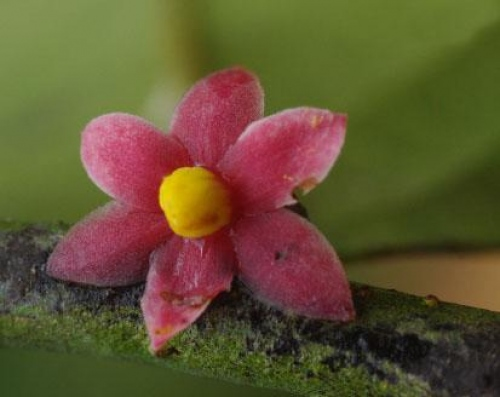Hundreds of new species are discovered every year, from frogs that don’t croak to the fish that work at the turtle carwash. Some areas are hotspots for these new discoveries, sometimes because they are almost inaccessible – but some might be in your own backyard.
Some areas are particularly large and can carry a wealth of species. The Congo Basin measures over 200 million hectares (494 million acres), spans six countries, and includes the largest tropical peatland in the world. Known as the “lungs of Africa” it is also a vitally important habitat for carbon capture. The Congo Basin is the largest carbon sink in the world, absorbing more carbon than the Amazon rainforest.
The World Wildlife Fund (WWF) has put together a new report called New Life in the Congo Basin: A Decade of Species Discoveries (2013-2023). This report highlights new species discovered within the Basin in the last 10 years, and the threats facing the area and the people that live there.
“The Congo Basin is not just a biodiversity haven; it is essential for the well-being of over 75 million people who depend on its resources for food, shelter, and cultural identity,” said Dr Martin Kabaluapa, WWF Regional Director for the Congo Basin, in a statement sent to IFLScience.

Ten years’ worth of research and discovery.
Image credit: KR Image/Shutterstock, Mr. Beekeeper/Shutterstock; © IFLScience
Hundreds of different organizations, teams, and researchers have discovered a total of 742 new species over the last 10 years. Gabon has the most species discovered with 262, while a close second goes to the Democratic Republic of Congo with 259 species. The total number spans the full breadth of the taxonomy, including 430 species of plants with a new species of coffee, 140 invertebrates, two new bird species and 10 mammals, including a monkey species known as the lesula.

The lesula is only the second new species of African monkey to be discovered since 1984.
Image credit: © Terese Hart
Also on the list are 22 new amphibian species and 42 new reptiles. One of these is the Congolese giant toad (Sclerophrys channingi), a species that has evolved to mimic the Gaboon viper. This is the only example in the world of a toad mimicking a venomous snake to avoid predation, explains the report.
Among the reptiles, the Central African slender-snouted crocodile (Mecistops leptorhynchus) was described in 2018. It was previously thought to be a subspecies of the West African slender-snouted crocodile; however, genetic analysis revealed the species split eight million years ago when volcanic activity created mountains between them.

Once thought to be a subspecies, the Central African slender-snouted crocodile was described as a new species in 2018.
Image credit: © Nik Borrow
Of the 742 new species, 430 of them are plants covering species of ferns, orchids, and flowering plant species. One species is even named Sirdavidia solannona, with the genus name in honour of naturalist Sir David Attenborough. In addition to the new species, the Congo Basin is home to thousands of plant species, with more than 30 percent of these trees and flora species being endemic to the region.

Sirdavidia solannona, from a genus named in honor of Sir David Attenborough.
Image credit: © Thomas Couvreur

The diminutive dwarf water cobra (Naja nana) grows to a maximum size of around 1 meter (3.3 feet).
Image credit: © Anthony Laing
The report credits several Indigenous communities, whose knowledge of the landscape and wildlife has led to several species being officially described in scientific literature after many years of being known to the Indigenous people themselves.
“For centuries, indigenous communities have lived in harmony with the forests. Recognising their knowledge is integral to conservation success,” said Moise Kono, Indigenous Peoples Coordinator for WWF Cameroon. “It is crucial that their voices and rights are respected as stewards of this land,” Kono added.
The report is available to download here.
Source Link: Bright Orange Viper And Shy Monkey Among 742 New Congo Basin Species In Last 10 Years